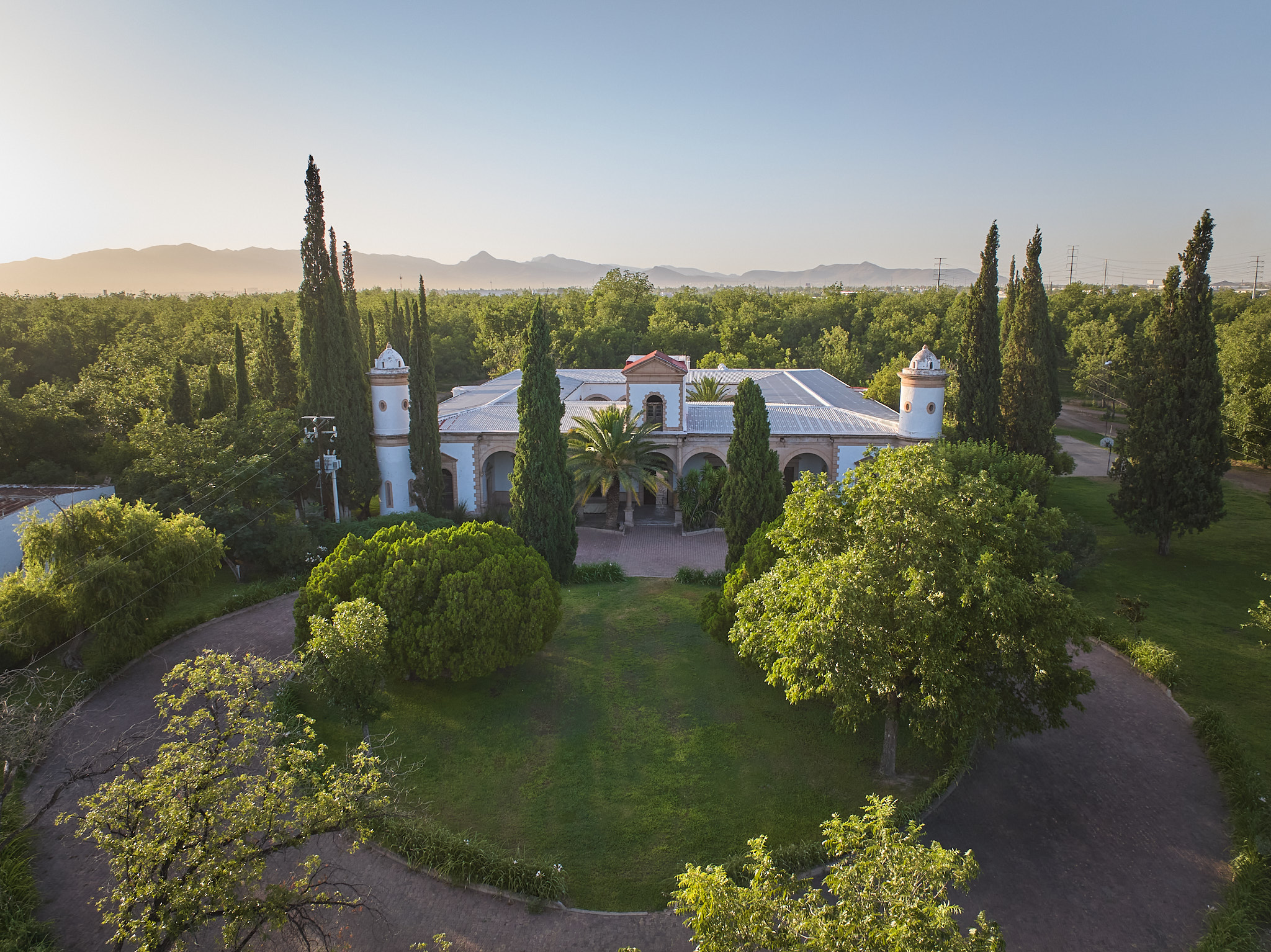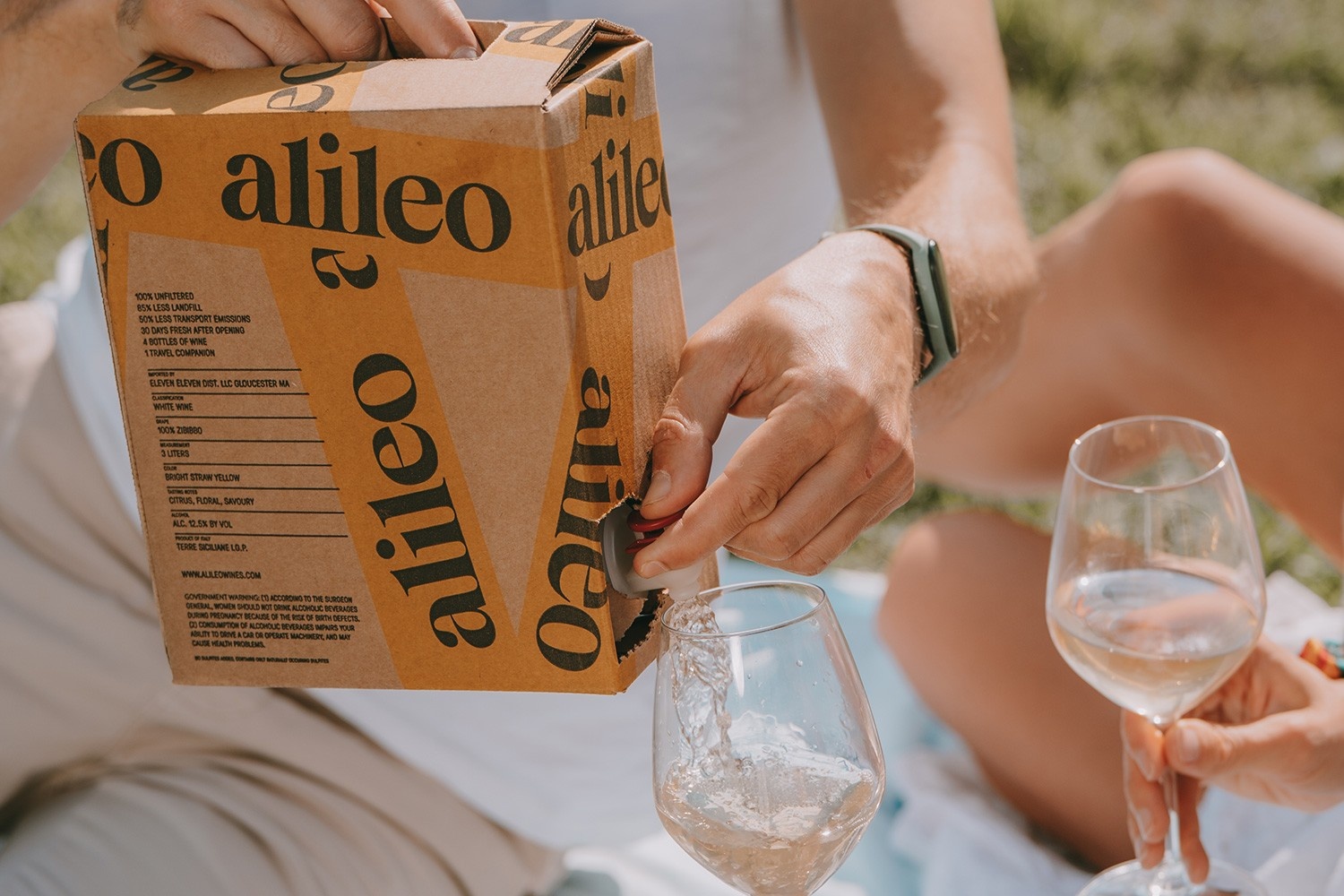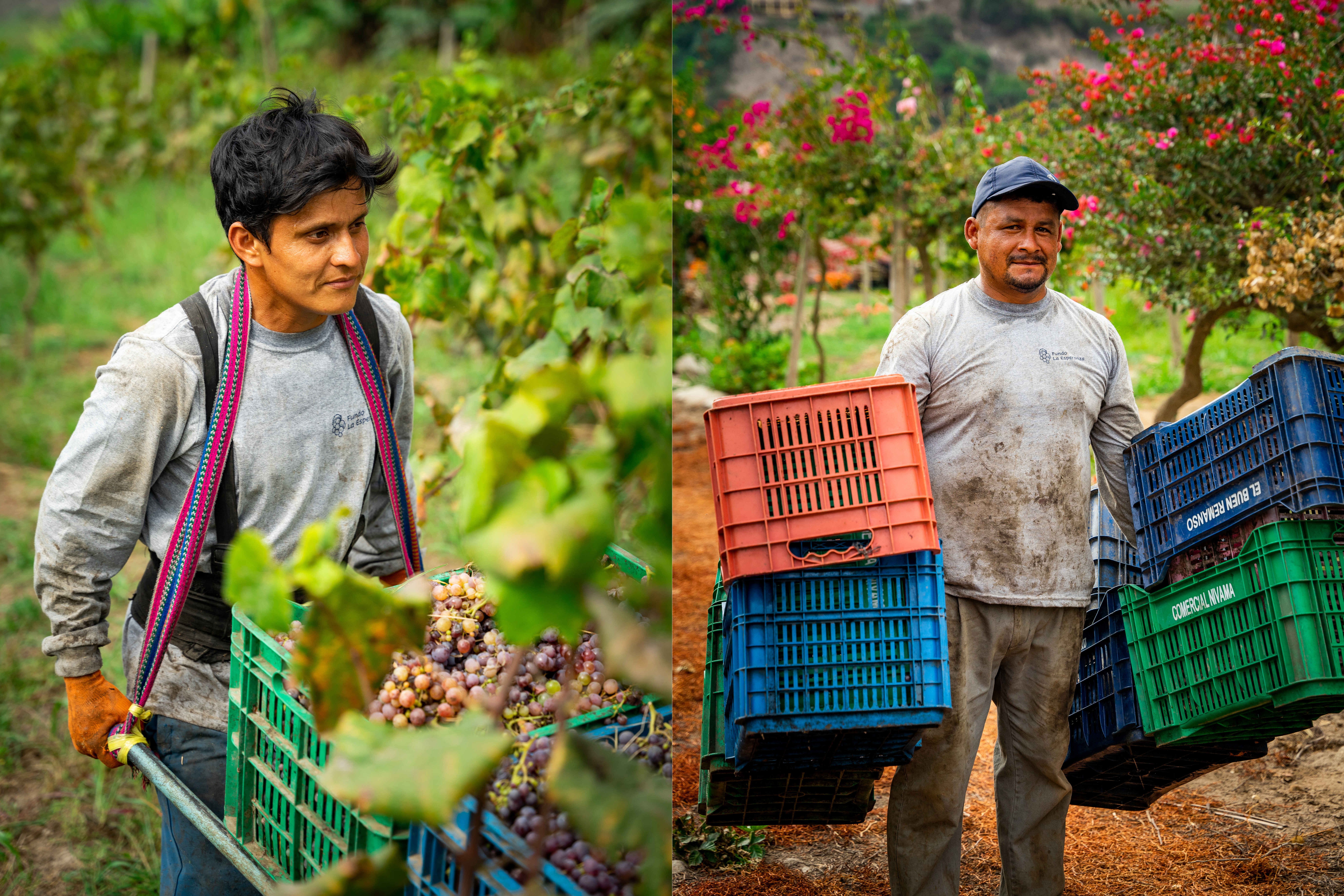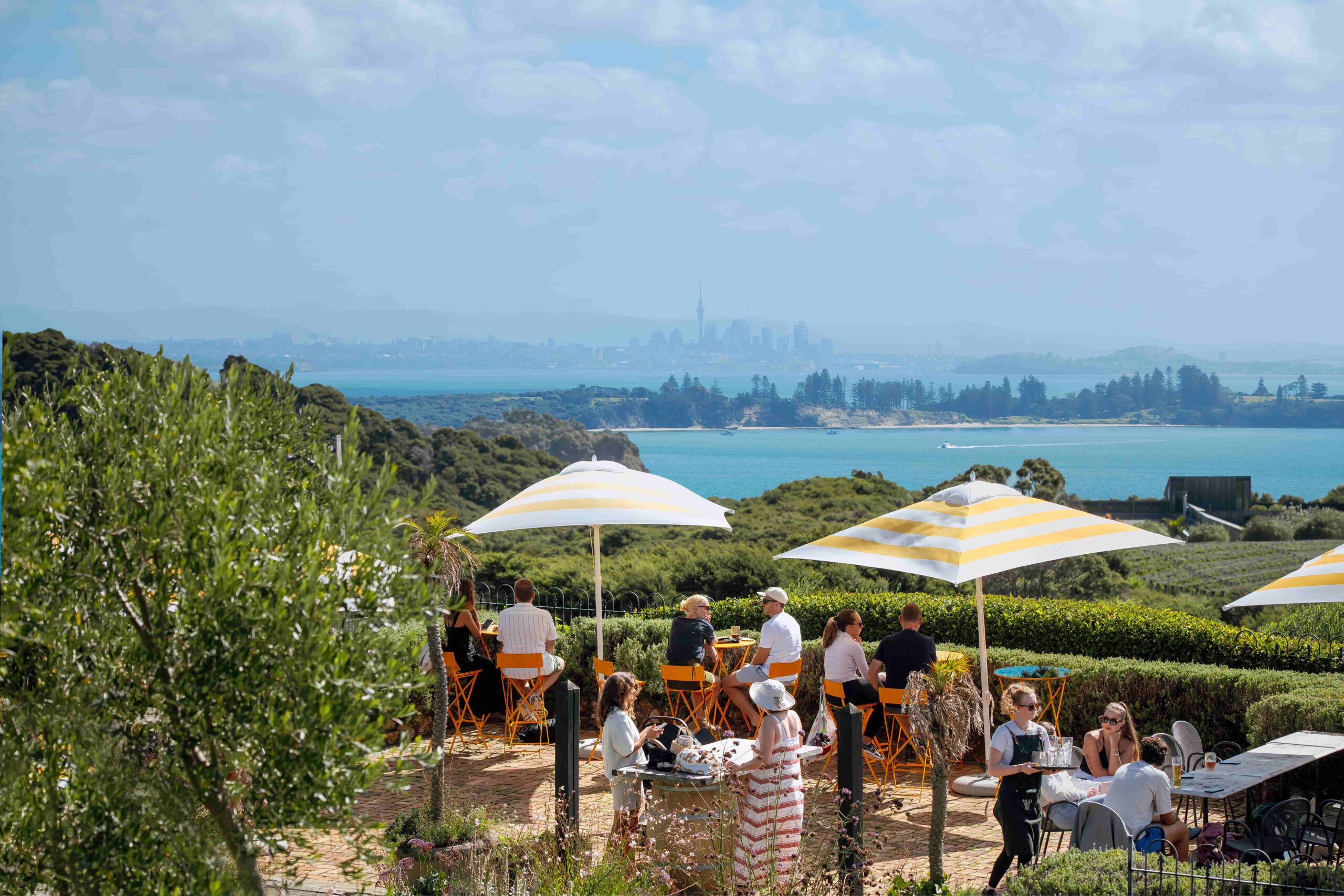NORTH STARS:
Community Support
Production Consumption
Heritage Value
“We call him the father of Sotol. He’s like a maestro guiding every step of the process.”
In the arid landscapes of northern Mexico, Hacienda de Chihuahua has emerged as a leading name in the revival of Sotol, a spirit deeply rooted in ancient traditions and crafted from the wild-growing Dasylirion plant. Founded in 1996 by the Elias Madero family, this family-owned distillery operates from the historic Hacienda Tabalaopa, an estate that has produced Sotol since 1881. Through innovative practices, sustainable harvesting, and a drive for quality, Hacienda de Chihuahua has brought this once obscure spirit to the world stage.
A Family Affair
Hacienda de Chihuahua’s story is deeply intertwined with the Elias Madero family. Not only did the Elias’ spearhead the brand, but they played a crucial role in formalizing the Denomination of Origin (DO) for this singular spirit. By securing this protection, they ensured that the production of authentic Sotol would remain confined to the regions of Chihuahua, Coahuila, and Durango.
“In 1996, my dad and José Daumas, our enologist, wanted to create a high-quality Sotol and start formalizing the regulations that would help elevate the spirit from its informal roots,” says Maria Elias, Senior Brand Manager for Hacienda de Chihuahua. This effort led them to play a key role in establishing the DO, a milestone that would secure Sotol’s place alongside tequila and mezcal.
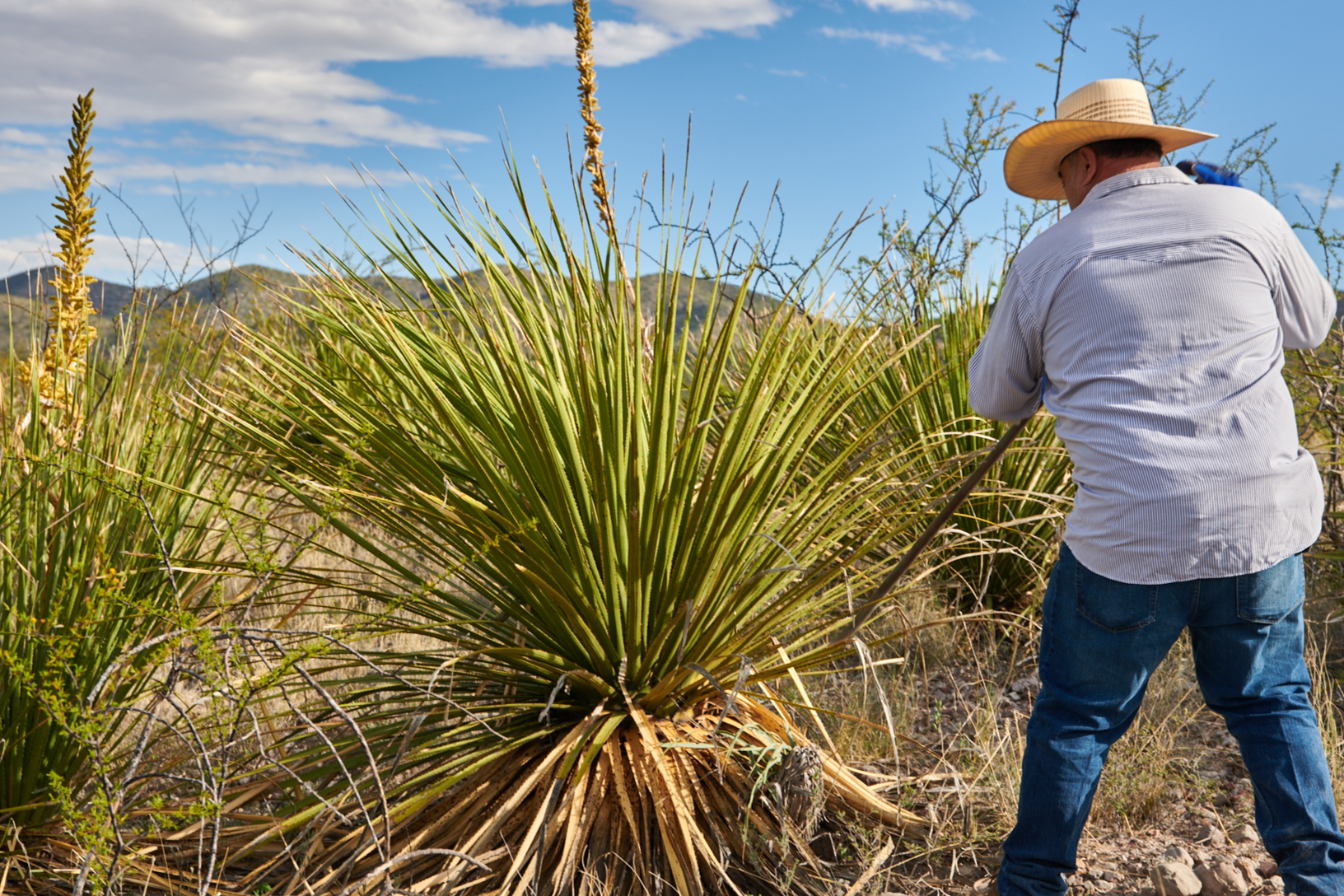
The Dasylirion plant grows in the wild.
Dr. José Daumas: The Architect of Modern Sotol
One of the most significant figures in Hacienda de Chihuahua’s success is its master distiller, Dr. José Daumas. With a background in enology from the École Nationale Supérieure Agronomique de Montpellier in France, Dr. Daumas brought his expertise to Mexico after working with prestigious brands like Martell, Moët & Chandon, and Larsen.
His influence is seen in the meticulous production process at Hacienda de Chihuahua, from the use of champagne yeast in fermentation to the smooth, refined flavors that have become a hallmark of the brand’s line of spirits.
“We call him the father of Sotol,” says Maria. “He has played such a key role in transforming what was once a rough, informal spirit into something that’s truly world-class. He’s like a maestro guiding every step of the process.”
From Cultural Patrimony, Illegality, to Regional Renaissance
Sotol has a complicated past. Despite being produced and consumed in northern Mexico for centuries, its production was illegal for much of the 20th century due to government restrictions that favored more commercialized spirits like tequila and brandy.
However, by the 1990s, the ban was lifted, allowing producers like Hacienda de Chihuahua to lead a renaissance for the spirit. The brand became the first to export Sotol globally, bringing international attention to a production that had long been confined to rural communities.
“We were the first registered brand of Sotol,” Maria explains. “It was illegal for many years, and we were the ones who started doing things right, setting up the norms and regulations.”
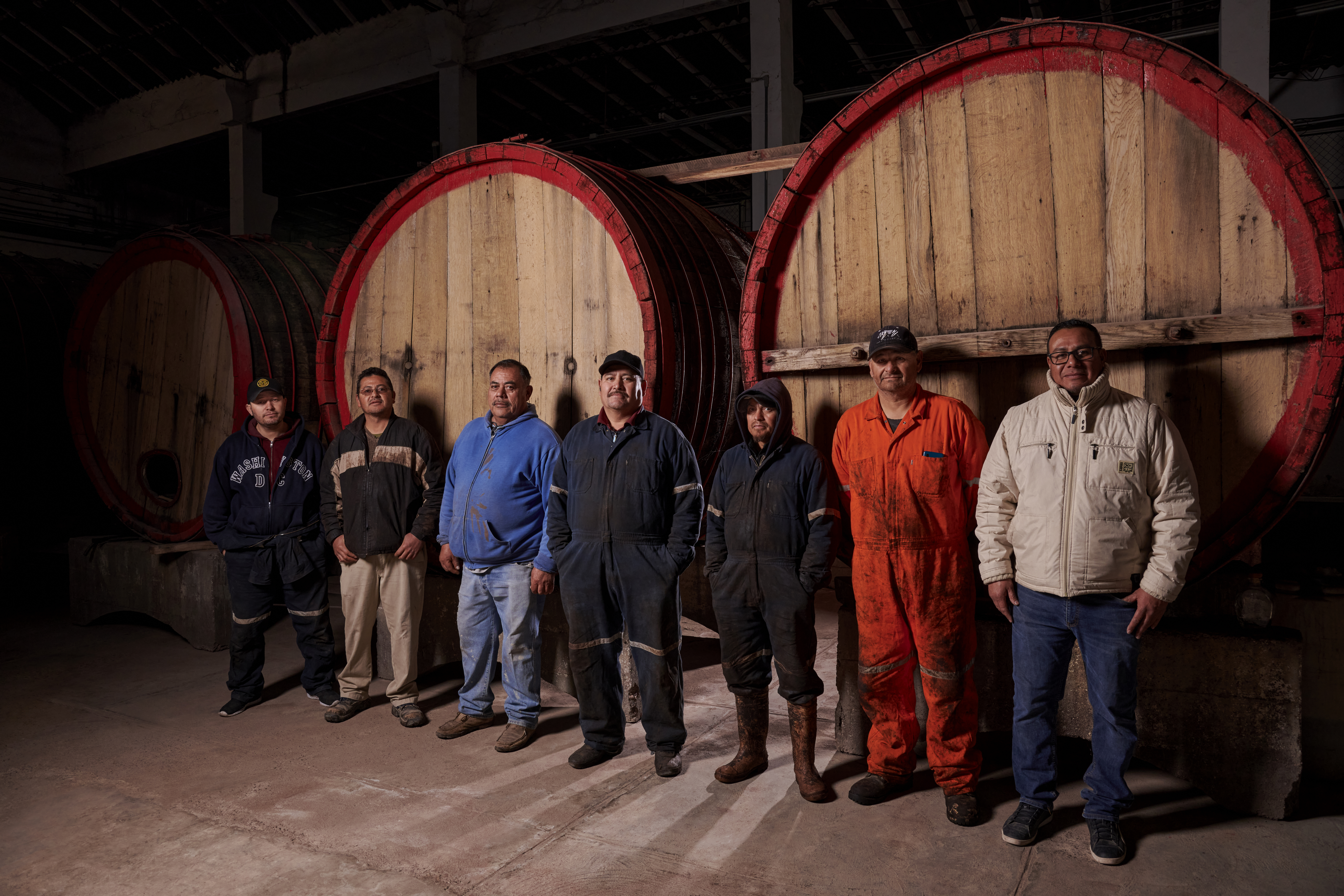
The team is like family at Hacienda de Chihuahua.
Stewards in Sustainable Harvesting Methods
Unlike the big players in other Mexican distillates, especially the tequila industry, Hacienda de Chihuahua has legitimate claims of producing a sustainable product.
Each year, the Mexican government announces the number and location of plants that can be harvested for Sotol production. This regulates the extraction of a natural resource by spreading it out across fields in the region.
Hacienda de Chihuahua, along with all Sotol producers, only harvest the piña of the desert spoon, not the roots. This keeps the plant alive and gives it a chance to regenerate. Further, Hacienda de Chihuahua only harvests 30% of mature plants in a designated area which helps the ecosystem maintain balance.
During harvest season, between September and March, Hacienda de Chihuahua and a forestry engineer will visit the designated site, usually on a ranch or common land, to assess the quality and quantity of the plants as well as the complexity of extracting them. Plants are typically harvested when they reach a minimum of 22 pounds, an assessment done by trained staff or jimadores, who know by sight which plants make the literal cut.
Once the site, study, and extraction plan are approved, a team of workers set up camp. They’ll remain at the site for the next six months, even during winter, enduring the extreme conditions common to the Chihuahuan Desert.
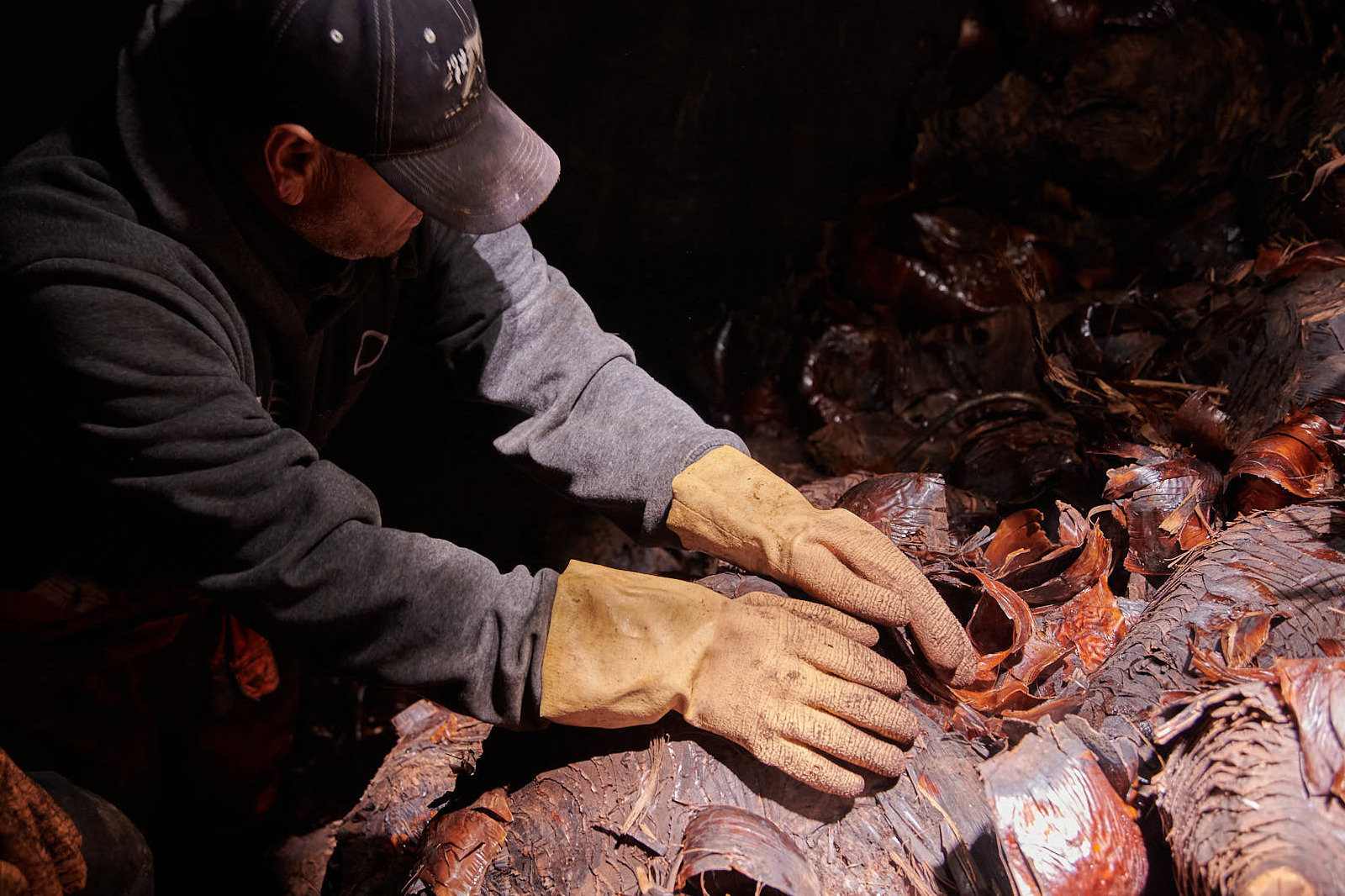
The cooking process of the Dasylirion plant.
Going Organic, From Field to Bottle
A defining feature of Hacienda de Chihuahua’s production is its commitment to using wild-harvested Dasylirion plants, commonly known as desert spoon. “We only harvest from wild plants in the desert. It takes about 15 to 20 years for the plant to mature, and that’s part of what makes our Sotol so unique,” explains Global Commercial Manager Francisco Prieto. “There’s something really special about knowing that what we’re working with is truly natural and untouched by cultivation.”
Because the plants grow in the wild, they’re harvested without herbicides or pesticides. As such, Hacienda de Chihuahua sought to achieve the rare feat of earning USDA organic certification for its products. Each bottle of Hacienda de Chihuahua Sotol is free of additives as well.
Hacienda de Chihuahua’s production process distinguishes it from other Mexican spirits. Unlike mezcal, which is often cooked using direct fire in underground pits, Hacienda de Chihuahua employs a steam-cooking method that results in a smoother, less smoky spirit.
The use of wine and champagne yeasts in fermentation, a nod to Dr. Daumas’s winemaking background further enhances the refined character of the brand’s Sotol.
“Our process is more similar to tequila, with indirect cooking using steam, which makes the Sotol very smooth. It’s one of the things that really sets us apart. It’s not smoky like some other brands; it’s clean and complex,” explains Francisco.
Exploring the Flavors of Sotol
Sotol is often described as having a flavor profile somewhere between tequila and mezcal, but with its own unique characteristics. It is typically earthy, herbal, and slightly vegetal, with some expressions having subtle smoky notes from the Dasylirion plant itself. As Maria notes, “Sotol has a lot of character, and it’s very different from mezcal and tequila. It’s smooth, but it has a strong earthy undertone that makes it stand out.”
Hacienda de Chihuahua offers a wide range of expressions to cater to different palates. Their portfolio features nine expressions including the unaged Plata, the Reposado, which is aged for six months, and the luxurious H5 Extra Añejo, a favorite among bourbon and cognac drinkers for its richness and depth. They also produce two cremas, a chocolate and a nutty expression based on pecans and almonds, both delicious on the rocks especially as an after dinner digestif.
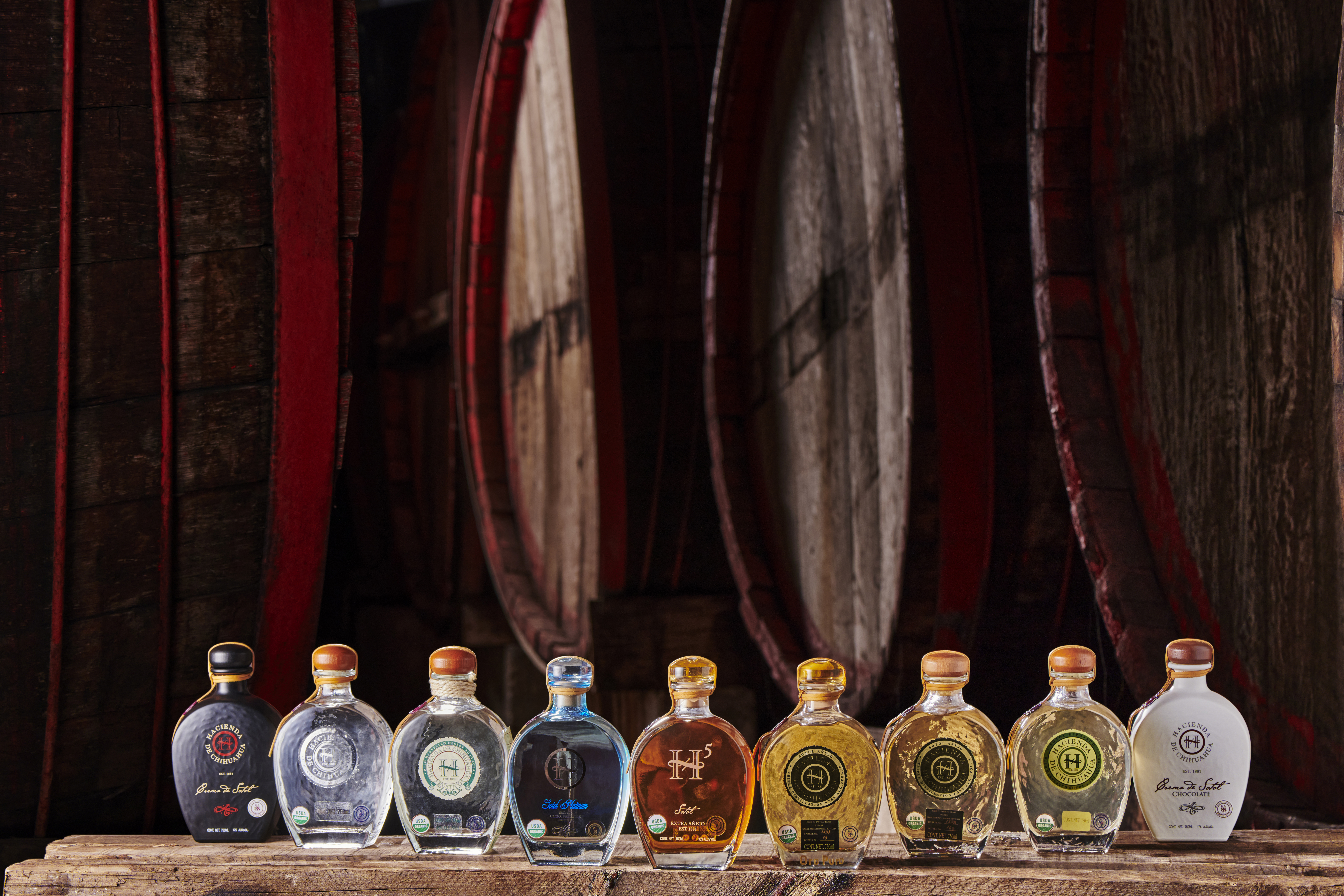
Hacienda de Chihuahua offers a wide range of expressions
Introducing Sotol to the World
Hacienda de Chihuahua has been instrumental in expanding the presence of Sotol beyond Mexico. The United States, particularly Texas, has become a key market, with tastings and promotions held in cities like Austin, Houston, and Dallas.
The brand is also making inroads in Europe and Asia, with recent exports to countries like Spain, Taiwan, and China.
Despite its growing global footprint, Hacienda de Chihuahua remains deeply connected to its roots. “Americans are more curious and adventurous when it comes to trying new spirits,” Francisco notes, reflecting on how the U.S. market has embraced Sotol.
“In Mexico, people are more hesitant because they already have preconceived ideas about what Sotol is, but in the U.S., people are excited to explore it,” he says. In a world dominated by tequila and mezcal, Sotol is carving out its place as a distinctive, artisanal spirit with Hacienda de Chihuahua at the forefront of the movement.
North Stars: Certifications, Community Support, Heritage Value
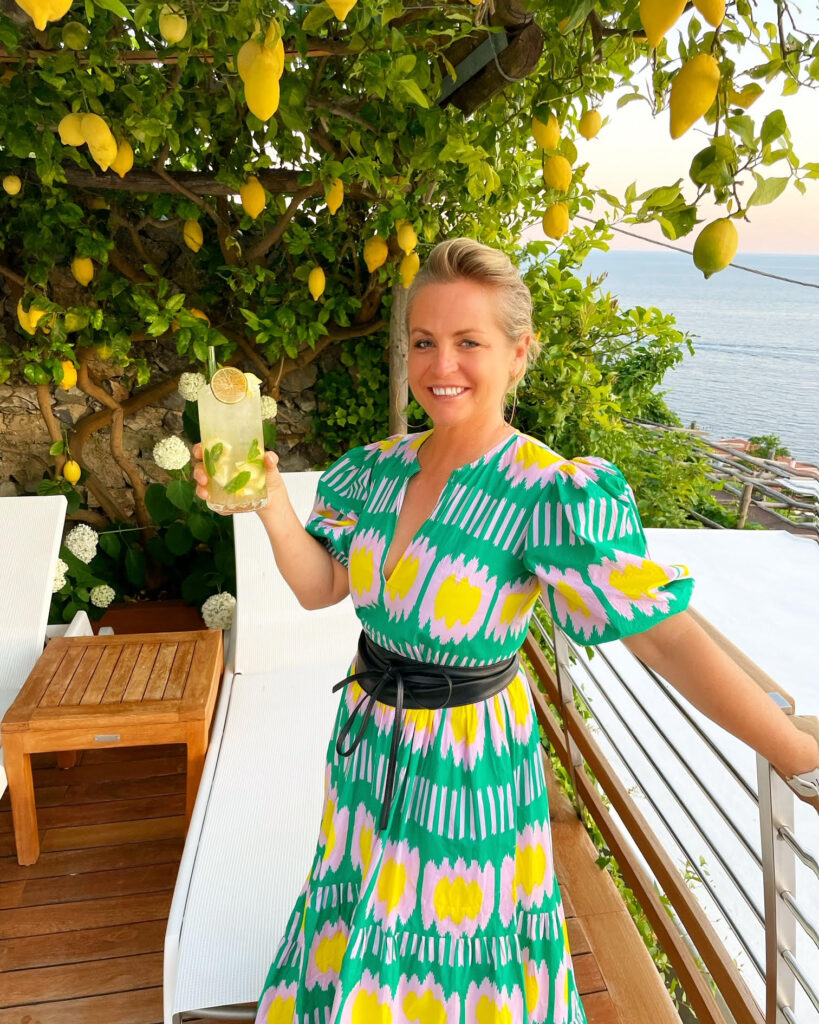
Founder and CEO of Azure Road, Lauren Mowery is a longtime wine, food, and travel writer. Mowery continues to serve on Decanter Magazine’s 12-strong US editorial team. Prior to joining Decanter, she spent five years as the travel editor at Wine Enthusiast. Mowery has earned accolades for her writing and photography, having contributed travel, drinks, food, and sustainability content to publications like Food & Wine, Forbes, Afar, The Independent, Saveur, Hemispheres, U.S. News & World Report, SCUBA Diving, Plate, Chef & Restaurant, Hotels Above Par, AAA, Fodors.com, Lonely Planet, USA Today, Men’s Journal, and Time Out, among others.
Pursuing her Master of Wine certification, she has also been a regular wine and spirits writer for Tasting Panel, Somm Journal, VinePair, Punch, and SevenFifty Daily. Mowery is a graduate of the University of Virginia and Fordham Law School, and she completed two wine harvests in South Africa.
Follow her on Instagram @AzureRoad and TikTok @AzureRoad


